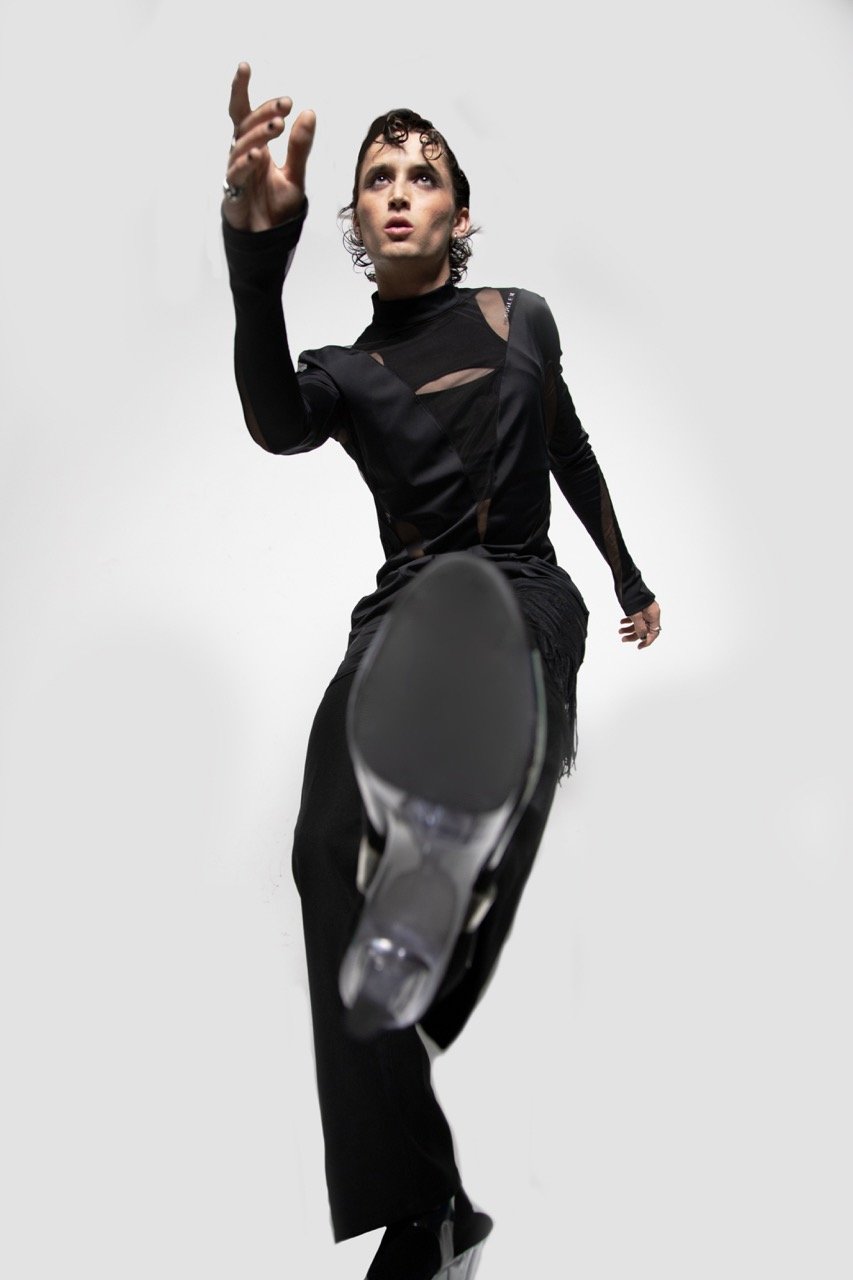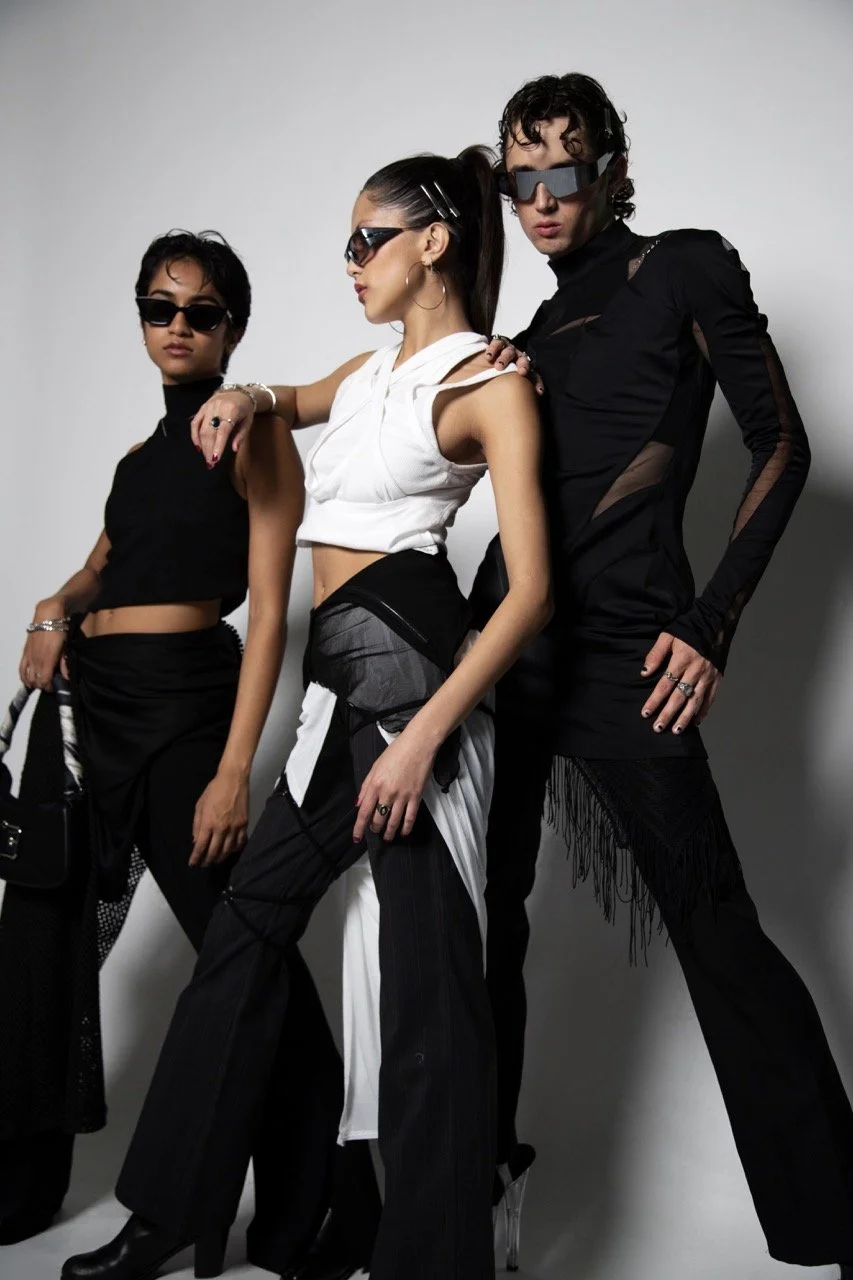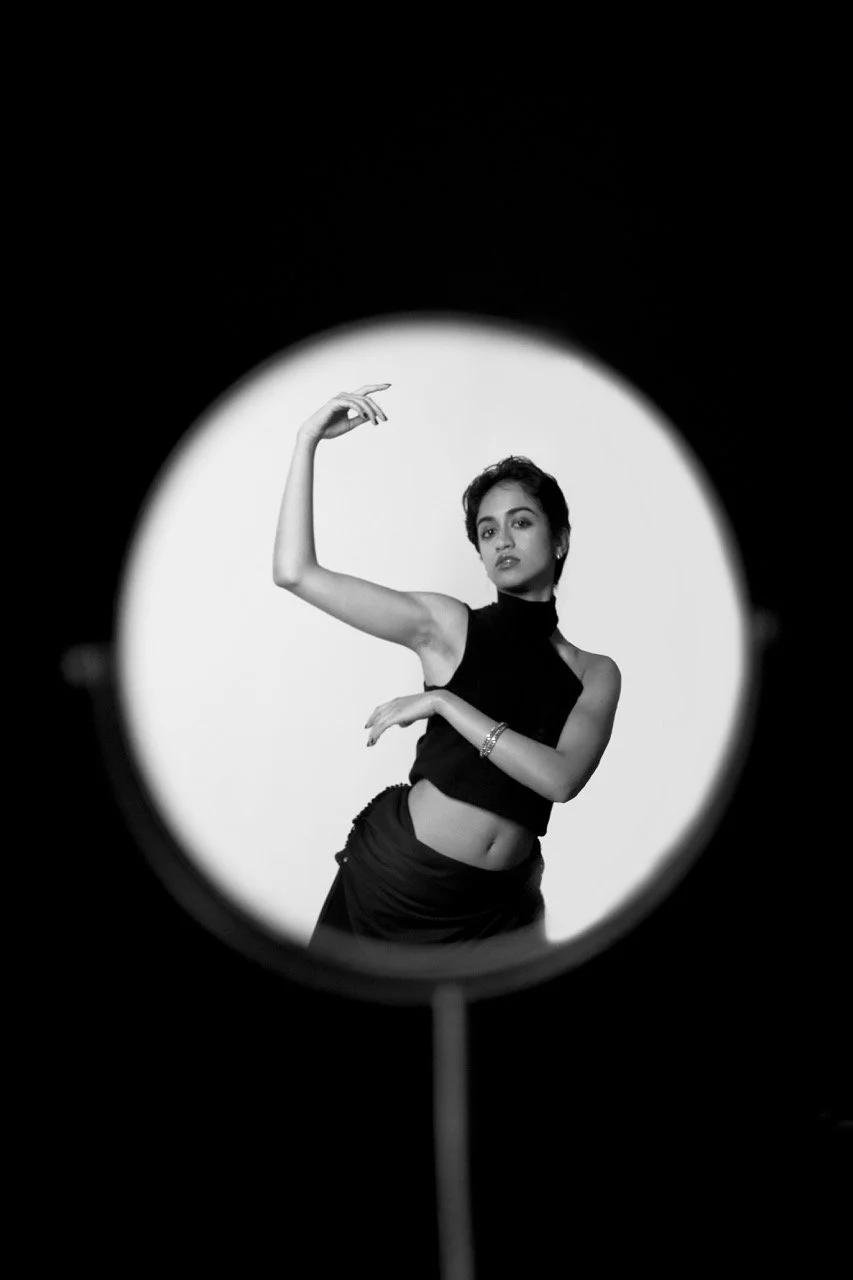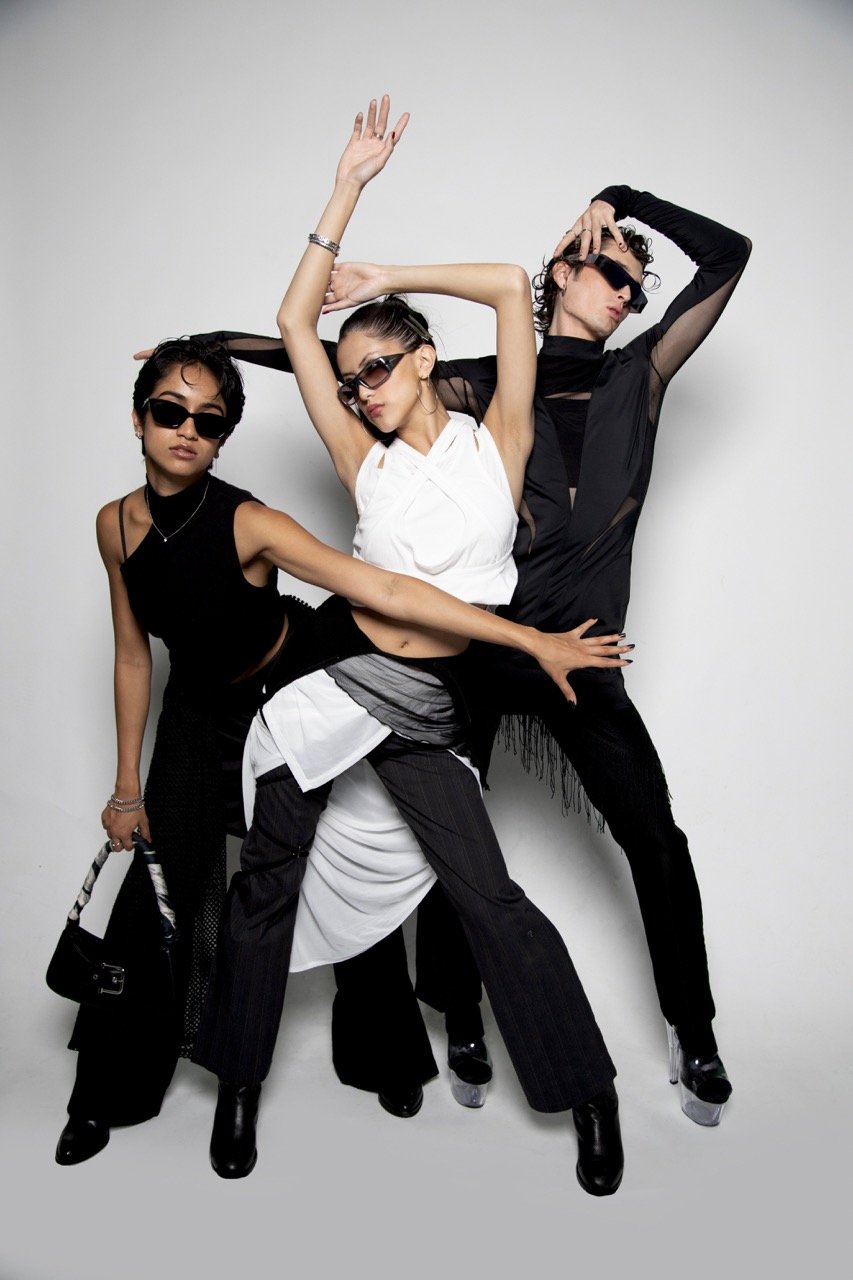Rebellion through Subversive Basics
What is the purpose of shirts and pants? Some would say “to cover”, “to function”, “to not be naked”, “to promote modesty,” and “to be complete”. However, nearing 2024, these supposedly concrete assumptions holding together the fashion industry have been completely subverted. Shirts need not cover or be practical, and pants can be tattered or in piecewise form. The term “subversive basics” coins this phenomenon of common closet “basics” that are intentionally designed to destroy its usefulness and original purpose, instead challenging established norms and fostering self-expression. “Subversive basics” refer to a style of clothing that exposes what you’d normally aim to cover up- taking seemingly essential wardrobe pieces and deforming them to the point of losing utility.
Photo by Alexia SaighFear no more, what would normally be seen as a pain in the try-on process and overall appearance of a garment (think cutouts, slashes, twists, turns, layers, and straps) is now the peak of rebellion against the typical gaudy, colorful overindulgence of capitalism. Subversive basics, besides utilizing slashes and cutouts, are usually identified in only neutral shades, and use the body as a focal point adjacent to the garment acting as a second skin. The body can be as much, if not more, of a statement than the piece itself! Clothing is no longer designed to simply cover, but in a subversive basic, serves as an architectural slice of a larger purpose.
The typically most sucked-in, protected, and misogynistically shamed parts of a woman’s body are embraced and celebrated through subversive basics. It would be commonplace to see a subversive style that fully exposes the stomach and decorates it with strings, straps, and cutouts that reveal the abdomen at seemingly bizarre but tactfully placed holes. Or, in past fashion history, the showing of a woman’s chest through sheer fabric would have been fully banned or censored beyond imagination. However, subversive basics celebrate this in equality. Expect to see where “a man would like to cover his nipples with a strappy bra? His girlfriend might want to bare hers in a multicolored Jmesh top” (L'Officiel) in subversive styles. The opportunities are limitless; why not use this rebellious new trend as a way to decorate what you’ve previously felt most insecure about? Reclamation and celebration is essential in this process.
Photo by Alexia SaighSubversive basics are paradoxical: avant-garde yet minimalist. This futuristic approach to our most fundamental closet staples like tank tops, loungewear, and bodysuits is likely thanks to various designers paving the way for such rebellion through their runway collections. For womenswear, designer Nensi Dojaka is most notably catalyzing this rebellion. Seen on Zendaya (pictured), as well as Kim Kardashian, Emily Ratajkowski, Kendall Jenner, and Rosalia, the stars are not shying away from their love of these rebellious basics. The Albanian-born Dojaka explores delicate balances between strength and fragility through her subversive styles incorporating tulle, organza, and jersey. She is most inspired by organic patterns in nature that take form into geometry.
Zendaya in Nensi Dojaka
Most famously, Rick Owens is another pioneer in popularizing subversive basics. Known for his iconic avant-garde and architectural design aesthetic (including his self-designed stores and subversive furniture design), Owens continually features unconventional silhouettes, asymmetry, and lofty draping that deviates from mainstream norms. His dark, edgy aesthetic lends itself more to rebellion, incorporating elements of goth and punk which offer that accompanying social commentary. Through this, he challenges conventional notions of what “basic” should look like— though his clothing may seem “basic” in some forms like the absence of pattern or gaudy color, it is anything but. He also blurs the lines between women’s and men’s clothing, knowing no bounds when it comes to gender-neutral styles. Outside of the catwalk, his subversive, defiant design vision extends across many mediums, including furniture design. He even created a wax, freestanding replication of himself wearing subversive styles to make a sort of meta-subversion table available to witness in many of his stores. (Vogue, HypeBeast).
Another designer famous in the industry for his ingenuity and subversive styles is Adam Saaks. Saaks teaches the accessibility and the approachability of creating your own subversive styles. With a penchant for deconstructing clothing in untraditional ways, Saaks gained notoriety when his now historically viral video in his “Shredded with Saaks” series showed his whimsical and quick genius in cutting clothing on the spot to resemble many of the styles in this article. He brings an element of creativity and interactivity to millions who witness him in action, where he travels to the farthest reaches of the planet so he can bring his love for T-shirt cutting to the masses.
One more place you can find subversion as a staple is over at Mugler. Thierry Mugler became a fashion revolutionary in the same ways that we honor subversive basics: unorthodox tailoring, inventive silhouettes, and avant-garde pieces. Whether seen in his ready-to-wear collection in 1998, (pictured), or in his famously body-hugging wrap styles seen adorning Cardi B and Bella Hadid, new creative director Casey Cadwallader is reviving bold and sexy through catering to and honoring all body types with Mugler’s unabashedly striking styles. (Vogue, Vogue)
As we near 2024 with potential economic downturns, the return of subversive basics in the fashion world holds significant meaning against the global political and economic backdrop. In navigating economic uncertainties, the fashion industry's adoption of subversion and minimalist, neutral colors signals a broader cultural shift. This movement not only questions the excesses linked to capitalism during unstable economic times but also provides an alternative to conspicuous consumption.
Subversive basics go beyond redefining the purpose of clothing; they serve as a form of rebellion against established norms, particularly those related to gender. In this era of socio-economic flux, the subversion in fashion becomes a symbolic expression of resilience and a rejection of conventional expectations. By embracing clothing that defies norms and celebrates individuality, people find a means of self-expression and empowerment amidst the uncertainties of the world, fostering a spirit of reclamation and defiance in the face of adversity. The emphasis on neutral tones and minimalist designs responds to the volatility of the times, rejecting extravagance for a more understated, timeless aesthetic that transcends the cyclical nature of microtrends. In this way, the revival of subversive basics becomes a poignant commentary on the socio-political climate, offering a visual rebellion against prevailing traditionalisms and a testament to the enduring strength of human expression in times of economic and political uncertainty.
Photo by Alexia SaighPhotography by Alexia Saigh (@alexiasaigh) & Angelina Kim (@asaighphotography, @ang1na9)
Modeling by Quinn Wynacht (@qu1nnt1ssent1al), Maia Driz-Driz (@maia.ilana) & Tarika Roy (@tarikaroyy)
Styling by Miguel Martinez (@miguxlluis) & Ranen Chang (@ranenchang)












